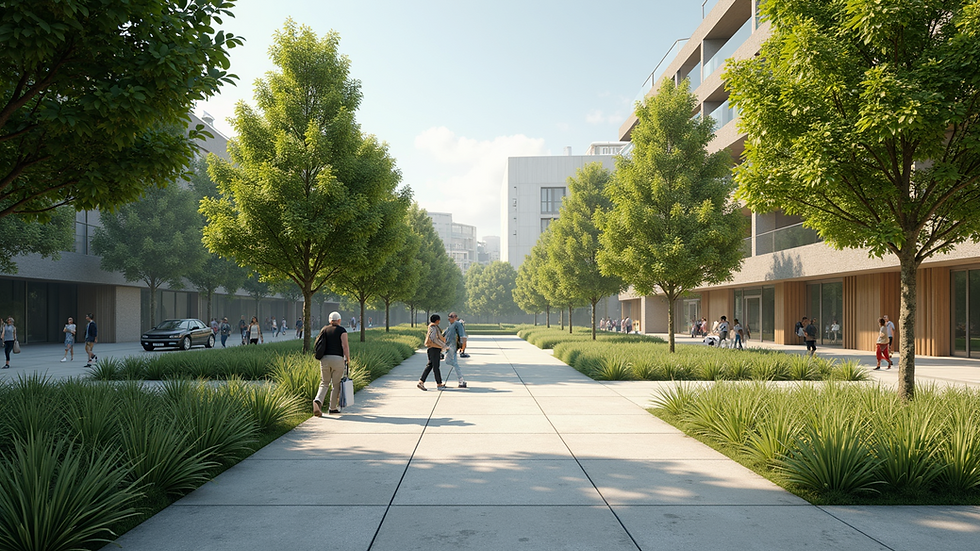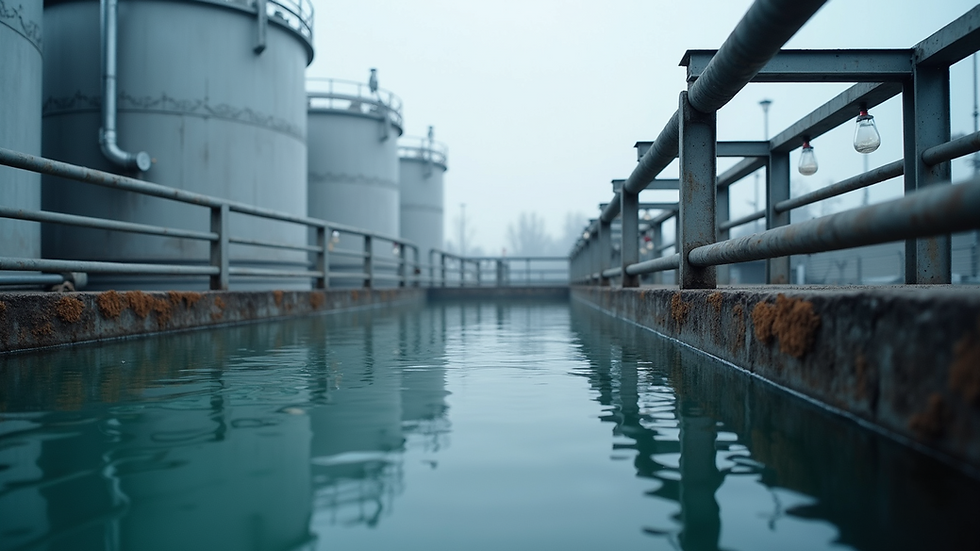Advanced Sewage Treatment Technologies for Sustainable India
- karan9377
- Jul 29
- 4 min read
Sewage management is a pressing issue in India, with rapid urbanization and population growth straining existing systems. The need for sustainable solutions has never been more critical. Advanced sewage treatment technologies present new opportunities for efficiently managing wastewater and protecting the environment. In this blog post, we will explore various sewage management techniques, shedding light on cutting-edge advancements and their potential for a sustainable India.
Importance of Sewage Management Techniques
The significance of effective sewage management cannot be overstated. According to the World Health Organization, over 2 billion people lack access to safe sanitation, contributing to severe health and environmental issues. In India, improper sewage treatment leads to waterborne diseases, pollution, and ecological degradation.
Implementing efficient sewage management techniques can mitigate these problems. For instance, cities equipped with proper sewage systems can reduce the spread of diseases like cholera and dysentery. Proper sewage management also helps safeguard local water bodies, ensuring the safety of drinking water supplies.

Overview of Existing Sewage Treatment Methods
Currently, many cities in India rely on traditional sewage treatment methods, such as activated sludge processes and anaerobic digestion. While these techniques can effectively treat wastewater, they often require substantial energy and space, leading to inefficiencies.
Activated sludge systems, for instance, involve aerating wastewater to promote the growth of bacteria. Although effective, these processes often struggle with fluctuations in wastewater composition and require regular monitoring and adjustment. As urban populations grow, traditional systems may become overwhelmed, necessitating more sustainable methods.
What is Advanced Waste Treatment?
Advanced waste treatment refers to innovative technologies that enhance the efficiency and effectiveness of sewage treatment. These methods not only aim to remove contaminants but also focus on recovering valuable resources from wastewater.
Some popular advanced treatment techniques include membrane bioreactors (MBRs), constructed wetlands, and nutrient recovery systems. These technologies often require less space and can handle varying influent flows more effectively compared to traditional systems. For instance, MBRs combine biological treatment with membrane filtration, resulting in high-quality effluent while reducing the footprint of the plant.
Implementing such systems can significantly improve sewage treatment, making it more sustainable and easier to integrate into urban environments.

Innovative Advanced Sewage Treatment Technologies
1. Membrane Bioreactors (MBRs)
MBRs represent a breakthrough in wastewater treatment. By combining biological treatment with membrane separation, MBRs effectively remove solids and pathogens while producing high-quality effluent.
The technology relies on a bioreactor where microorganisms break down organic matter. After treatment, the wastewater passes through membranes that filter out remaining solids. The result is clear, treated water suitable for reuse or discharge into the environment.
The compact design of MBRs makes them ideal for urban settings where space is limited. These systems are also modular, meaning they can be expanded as urban demands grow.
2. Constructed Wetlands
Constructed wetlands utilize natural processes to treat wastewater. These systems consist of shallow basins planted with vegetation, which helps filter contaminants from the water.
The plants absorb nutrients, while microorganisms in the soil break down organic matter. Constructed wetlands are particularly effective at removing nitrogen and phosphorus, which are often responsible for water pollution.
Moreover, these systems can be integrated into urban green spaces, adding aesthetic value while improving environmental health. For instance, parks can be designed to include constructed wetlands that treat stormwater runoff and provide habitats for wildlife.
3. Nutrient Recovery Technologies
Nutrient recovery technologies focus on extracting valuable resources from sewage treatment processes. Phosphorus and nitrogen, two critical nutrients, can be recovered from wastewater and reused in fertilizers.
Technologies such as struvite precipitation enable the capture of phosphorus, which can then be used in agriculture. This not only reduces the environmental impact of sewage disposal but also provides a sustainable solution for agricultural nutrient supply.
Challenges and Solutions
Despite the promise of advanced sewage treatment technologies, several challenges remain. Funding, public awareness, and regulatory hurdles can impede widespread adoption.
Funding and Investment
Many innovative treatment technologies require significant initial investment. Government support and public-private partnerships can provide critical funding sources. By investing in advanced systems, cities can improve sewage management while promoting sustainable practices.
Public Awareness
Educating the public about the benefits of advanced sewage treatment is essential. Awareness campaigns can highlight the importance of effective sewage management and encourage community involvement in implementing these solutions.
Regulatory Framework
Regulatory frameworks must evolve to accommodate advanced treatment technologies. Policymakers can facilitate the adoption of innovative systems by streamlining permissions and promoting research and development in the sector.
Real-World Examples of Advanced Sewage Treatment in India
Several cities in India have begun implementing advanced sewage treatment technologies, setting the stage for broader adoption.
1. Surat
Surat, a city in Gujarat, is a leader in sewage treatment. The Surat Municipal Corporation has implemented a range of technologies, including anaerobic digestion and MBRs, to treat wastewater efficiently. The city's treatment plants are designed to handle varying inflow conditions and recover valuable resources from sewage.
2. Bengaluru
Bengaluru has adopted constructed wetlands to manage stormwater runoff and treat wastewater. These systems are integrated into parks and green spaces, providing dual benefits of sewage treatment and urban beautification. The city's efforts highlight the potential for sustainable urban planning that prioritizes environmental health.
3. Chennai
Chennai is working towards enhancing its sewage treatment infrastructure by incorporating advanced technologies. The city is investing in nutrient recovery systems, showing a commitment to sustainability and resource management.

Steps Towards a Sustainable Future
To achieve sustainable sewage management in India, stakeholders must collaborate on several fronts.
Promoting Research and Development
Investing in research and development is vital for advancing sewage treatment technologies. By fostering innovation, cities can develop more efficient systems that cater to local needs.
Building Local Capacity
Training local professionals in advanced sewage treatment techniques can enhance implementation. Capacity-building initiatives will ensure that communities are equipped to manage and maintain new technologies effectively.
Encouraging Community Participation
Engaging communities in sewage management projects fosters a sense of ownership and responsibility. Initiatives that involve local populations can lead to greater compliance and support for advanced treatment systems.
In conclusion, the path to a sustainable sewage management system in India is paved with innovations in advanced sewage treatment technologies. By understanding the importance of effective sewage management and exploring cutting-edge solutions, India can ensure a healthier environment for future generations. The opportunity for a cleaner, more efficient approach to wastewater management is within reach, making it essential for policy makers, communities, and stakeholders to unite in this endeavor.



Comments